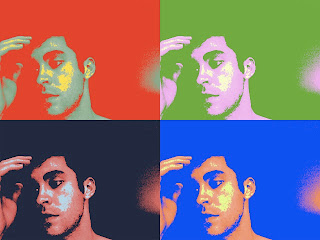Joyful Movement.

I am officially obsessed with Ohad Naharin. Throughout my life I haven’t ever really seen a series of work by any one choreographer and been completely blown away (excluding Balanchine and Robbins of course) but after seeing two works by this brilliant man I would go to Israel just to see his work.
Last night I dragged a couple of non-dancer friends to go to Lincoln Center to see the Batsheva Dance Company perform “Telophaza,” a full-length work of the highest caliber. Sitting in my seat at the State Theater I found myself remembering the same feeling of elation when I watched Nacho Duato’s company five years ago. Something about European modern dance is becoming so special to me and I never would have expected it.
“Telophaza” is a stunning piece using a seemingly endless amount of dancers to represent the power of unity and individuality at the same time. Naharin is most effective with his movement when he gets all of his dancers going together and the majority of the evening was spent in unison. The amount of power and excitement that can be accomplished by really strong, musical, innovative unison dancing is unparalleled in my opinion.
There were movements of this ballet where the wings were like clown cars with the slats set up showing no place for the dancers to enter and exit from yet a constant flow was miraculously appearing form the wings. At the back of the stage hung four large screens that were used to incredible effect mostly of live feeds of the dancers faces. As the majority of the company danced on the bare stage there would be four large, peering faces gazing out into the audience as the dancers interrogated themselves in the lenses. This focus on such zoomed in sections of the body seemed to pit the idea of separate and united thought and movement against each other. The viewing of the parts of the whole was hypnotic and played with the ideas I had talked about in an earlier post of Naharin’s love of the coexisting of different movement patterns. Fast and slow, smooth and rigid, confined and open; it was all demonstrated by watching both the screens and the dancers on stage at the same time.
There are so many parts of this piece I would love to be able to watch again but having it replay in my memory is incredible as well. My friends ended up loving the evening (which was a relief to me after having so much pressure put on the fact that the piece could have possibly been horrible) and we worked ourselves into a sort of frenzy re-enacting parts of it later in the night.
After seeing both this piece and “Minus 16” I am so happy to know that whenever I feel like I have lost the joy of movement I can just remember these two experiences. This, to me, is what dance is all about and it’s a shame that we don’t have the chance to see work like this more often.



0 Comments:
Post a Comment
<< Home